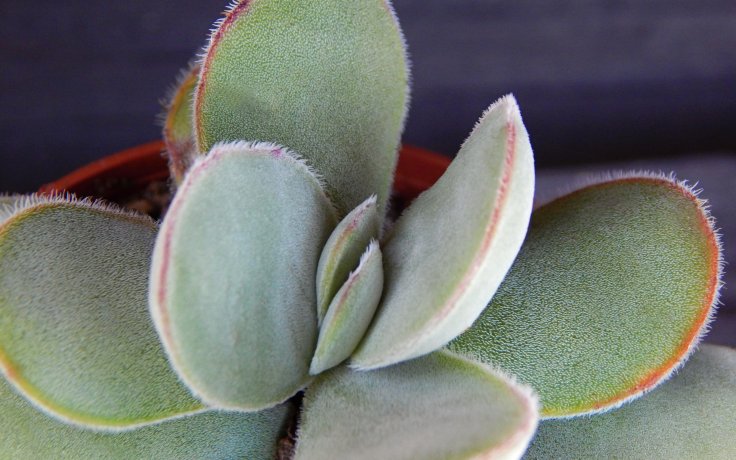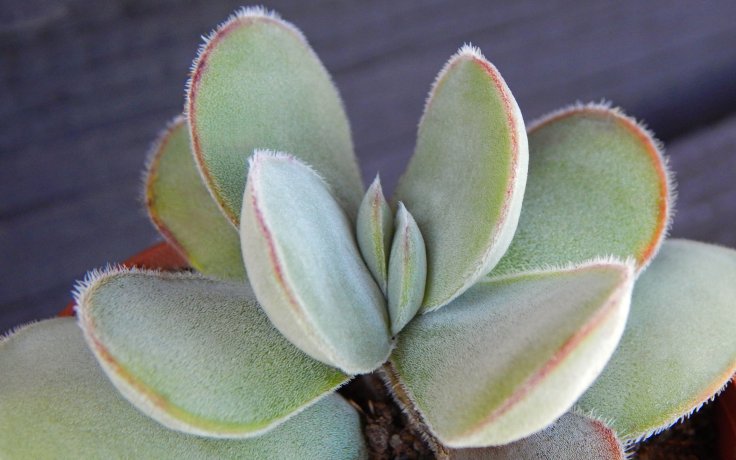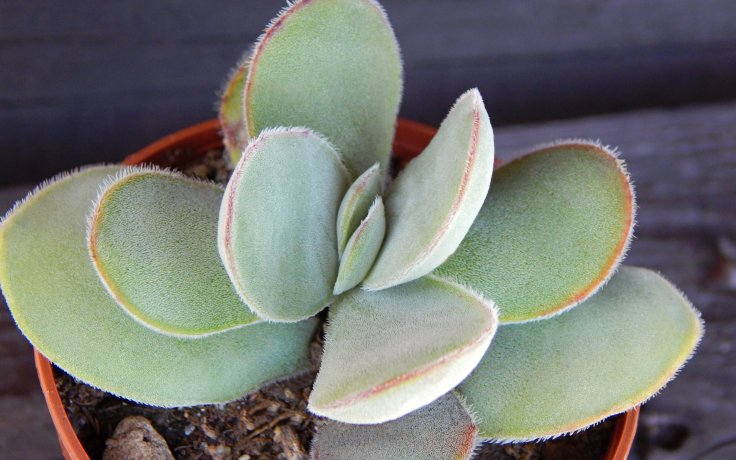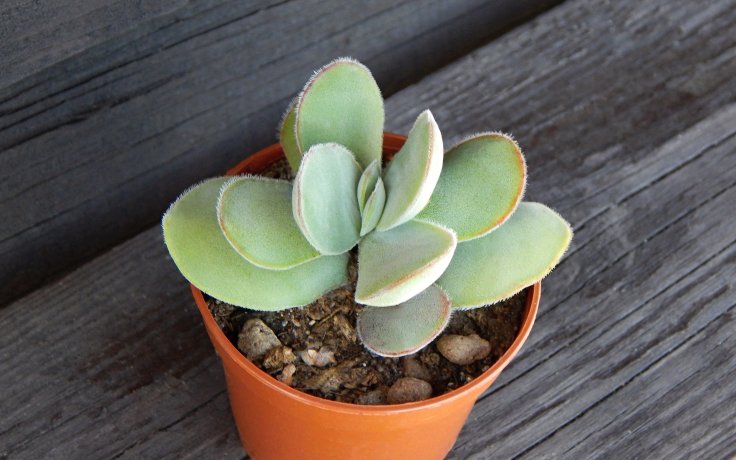- Home
- Succulents
- Crassula
- Crassula cotyledonis





Crassula cotyledonis
The plant likes a sunny habitat.
Always water a few days after the substrate has dried out. In winter, limit watering.
It can tolerate -3.9 °C in the short term. However, the plant is not hardy.
The surface of the leaves is densely covered with small white hairs. The texture of the leaf resembles fur and the colour takes on a more whitish tint.
This succulent plant is characterized by high species variability. This relates to the size and colour of the leaves. Synonyms such as Crassula cotyledon and Globulea cotyledonis can also be found in naming. In nature it is found on gravel slopes among rocks and shrubs.
It is characterised by leaves with a grey-green to yellow-green colour. The leaf margin turns burgundy, giving the plant an elegant contrast. The leaf surface is densely covered with coarse curved hairs and marginal cilia, which give the plant a velvety touch and protect it from excessive moisture loss. The oval leaves grow densely piled on top of each other to form a rosette that usually reaches a maximum height of 5 cm with the overall height of the succulent.
In the flowering season, tubular to almost cylindrical flowers appear, which turn cream to yellow in colour. The flower stalks are strong and upright to the last moment.
Crassula cotyledonis is an unpretentious succulent plant that is ideal for beginners. When watering, it is important to water directly into the substrate and avoid watering the leaves to minimise the risk of rust. What is particularly striking about the plant are its leaves and the short hairs on them. In addition to its beauty and undemanding nature, Crassula cotyledonis is also considered a symbol of positive energy. Many people therefore acquire it for their home to bring peace and harmony into it.